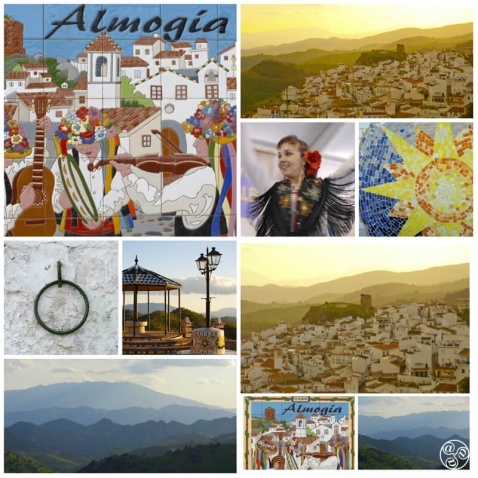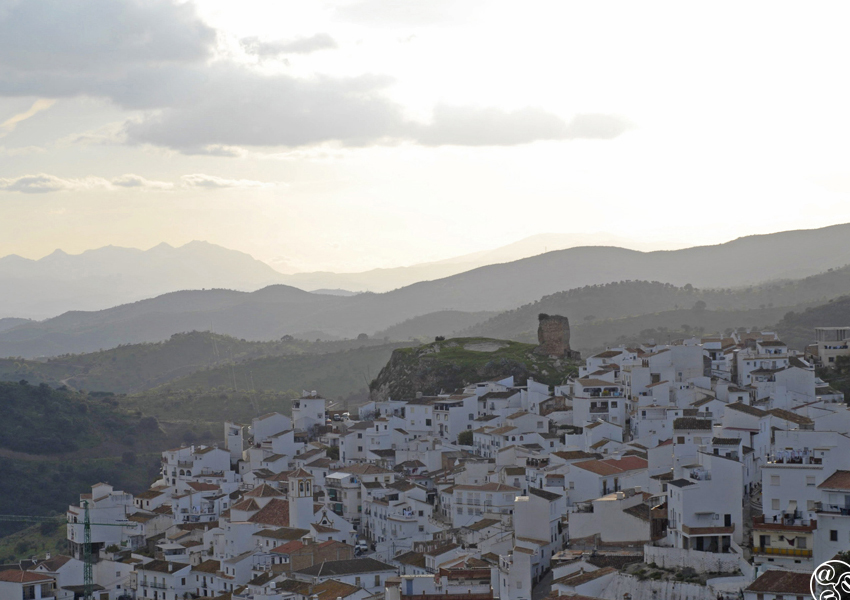
The village of Almogia © Michelle Chaplow |
|
Almogia
This small town roughly halfway between Málaga and Antequera is rightly proud of its name. It derives from the Moorish al-megia or al-mexía, 'the pretty one', a reference to its position in the foothills of the Sierra del Hacho, in the shadow of the Sancti Petri peak.
There was very probably a settlement here since Roman times, as the presence of a Roman road nearby attests. The town we see was settled by Moors, and during the revolt against Córdoba's Omeyas caliphate by Omar ben Hafsún in the 11th century Almogía was fortified as an outpost of Hafsún's castle at Bobastro, near the El Chorro gorge. During the wars of the Reconquest, Almogía was also used as a prison for Christian captives, and fell to the Christians only late in the Reconquest - 1487, just five years before the decisive fall of Grenada in 1492. Many of the 'Moriscos' - "those allowed to remain" - were involved in the unsuccessful Moorish uprising of 1570, and reprisals were harsh, leading to a drastic depopulation of the area. The castle was captured by the French in the 19th century War of Independence, and deliberately destroyed prior to their ousting. Today, only one of the original seven towers remains, the Torre de la Vela, possibly named after the tower in the Alhambra whose bell tolled the time for the surrounding countryside.
Almogía is known ass "the cradle of the Verdiales", the rich local style of flamenco based on a country variant of fandango, itself probably based on Arabic musical forms. Almogía hosts an important Verdiales festival every first week in August.
Its hilly setting makes Almogía an ideal base for arboreal agriculture such as cork, olives and almonds, as well as crafts employing esparto grass. The village's worker cooperatives are famous for their hats, which were worn by Spanish soldiers during the Cuban wars of the 19th century. Almogía also has a reputation for fine saddlemaking.
The castle, known as the Hins-Xan-Biter (Sancti-Petri, after the mountain) is the most prominent structure in Almogia, although most of it is in ruins. The town's most remarkable church is the Iglesia de Nuestra Señora de la Asunción, built over the ruins of a Moorish mosque deliberately destroyed after the Reconquest. It was designed by Diego de Vergara in 1552 for the Bishop of Málaga. Despite the destruction of the original mosque, an impressive coffered mudéjar ceiling covers the central nave. The church boasts numerous 18th century religious icons, as well as a portrait of the hermit, Saint Paul.
Almogía - Hotels
Book hotels in Almogía
The second most important religious structure in the town is the Ermita del Sagrado Corazón (sacred heart), located in the upper part of the town. The building we see today was built in the 18th century and has a small choir and bell tower, originally used by nuns living in an adjoining convent that was demolished in the 19th century. The town also has a shrine of Christ the Saint on the cross in calle Santo Cristo, the only surviving example of no less than fourteen that were erected around the town.
Just outside the town, the Lavadero de Noria, its former municipal wash house, on calle Juan Carlos 1, was still in use as late as 1990. It consists of no less than thirty earthenware basins on a stone base, originally fed by water raised by waterwheel. Further outside the town, at the Venta del Fraile, is a minor archaeological site where prehistoric paintings and artefacts were discovered.
Almogía has a number of important annual festivals. After the February carnaval, Semana Santa at Easter reaches a peak on the Thursday and Friday of Holy Week, when the 'Burial of Christ' procession takes place and most townsfolk dress in black. On May 15, the romeria (procession) of San Isidro, patron saint of farmers, gives everyone an excuse to travel out into the countryside for a picnic. The August Verdiales festival also coincides with the Trilla, or threshing competition. There are three classifications in this competition among threshers and the best way to separate wheat from chaff, including threshing on a board, and threshing with a roller. There is also a threshing song celebration. The most celebrated Almogía dish is Chanfaina, kid goat with almonds, but there are also many local specialities using pork.
The municipal tourist office is at the town hall, in Plaza de la Constitución, Tel: 952 430 025.
